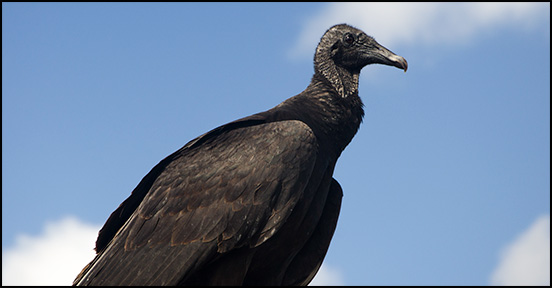MANAGEMENT...

UK Extension Helps Livestock Producers Deter Black Vultures
Birds of prey can be problematic during calving season; here’s a tip for preventing predation.
Black vultures are a concern for livestock producers throughout Kentucky, particularly this time of the year, as they can kill newborn calves and other juvenile livestock. University of Kentucky (UK) College of Agriculture, Food and Environment faculty and staff are working with Kentucky producers to find low-cost, legal options to control these birds and prevent livestock losses.
Controlling black vultures is challenging, because the 1918 Migratory Bird Treaty Act protects them. This act makes it illegal to kill them without a valid federal permit. A highly intelligent bird, the vulture is difficult to kill even with a valid permit. Read more.
A Place to Start Pasture Renovation
Pasture weed control provides better forage availability and profitability.
Weed management should be the beginning point of renovating a pasture — even before fertilizing or replanting species, according to Scott Flynn, a field scientist with Dow AgroSciences. “If you don’t deal with the weeds, they’ll take up fertilizer and real estate,” explains Flynn.
When you are ready to manage weeds, “You shouldn’t mow to control,” adds Flynn. “Mowing is like kicking the can down the road,” he says of the lack of weed control it produces. He notes that mowing creates a windrow that suppresses other forage growth, and it can expose bare ground, which is an invitation for weed seeds to establish. Moreover, he reports that it can cost $15-$25 per acre to mow, which is equivalent to one herbicide application. Read more.
Weaning Summer-born or Fall Calves in Late Winter
Innovative option available to wean summer or fall calves in late winter.
When ranchers switch from January and February calving to green-grass calving in May and June to be more in sync with nature, there’s a question of when to wean the calves. This seedstock producer came up with a nice way to wean in late winter — a method that would also work for some fall-calving herds.
Trevor and Cheryl Branvold raise registered Angus near Wawota, Sask., Canada, on a farm that’s been in Cheryl’s family since it was settled in 1888.
“Currently we run about 150 pairs and market 2-year-old bulls; we now calve in May and June so we hold those bull calves over and sell them in March just before they turn two. Our winters are cold and at first we battled early calving in order to have the bull calves old enough to sell as yearlings, but now we realize we don’t have to do it that way,” says Trevor. Read more.
The Data Behind Decisions
Intuitive tools make chuteside choices faster, easier.
It’s almost too cliché to say, but Ray Williams, Gallagher’s North American business development manager, said it anyway: “You can’t manage what you don’t measure.” Williams led a live demonstration Feb. 1 titled “Data-driven Decisions for Productivity” at the 2018 Cattle Industry Convention & NCBA Trade Show.
Attendees were interested in learning about the latest data-collection tools available. The latest generation of cowboys and cowgirls, said Williams, are more excited about collecting data and using it in a cattle operation. For some of the older generation, data requires a paradigm shift, he noted. Read more.

Justin Sexten
Unintended consequences?
You hear more about mature cow size and growth potential of calves now that profit ebbs and flows with the cycle. We’ve written about mature size, but not much about how to use the relevant tools to change it. So now, let’s examine the strategies and tools available — and the unintended consequences of ignoring them. Read more.
Grazing Profitability and Sustainability
Knowing and supplementing existing grazing options help reduce winter feed costs.
The average cow-carrying cost was $384 in 2000; it is $884 today, said Bryan Weech, western territory manager for Barenbrug. About 65% of these costs are from feed, he told attendees of a Learning Lounge session at the 2018 Cattle Industry Convention & NCBA Trade Show in Phoenix, Ariz., this winter.
For profit-minded ranchers, he reiterated that profit/loss = (production ✕ market value) – costs. Experts indicate the biggest costs are depreciation, labor and feed. The biggest of these three is feed, he noted. Read more.
Angus Advisor
Click here for April herd management tips from cattle experts across the nation. Advice separated by region.
[Click here to go to the top of the page.]







